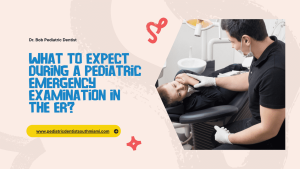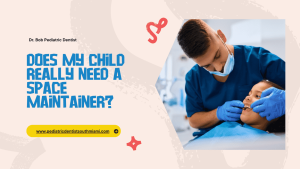If your child is experiencing challenges with feeding, speech, or oral habits, it could be caused by tongue-tie. Many parents are uncertain if surgery is the only option for treatment. Luckily, for tongue-tie treatment in South Miami, there are non-surgical options to improve tongue movements and assist with oral development.
What is Tongue-Tie?
Tongue-tie, or ankyloglossia, is when the frenulum (the tissue underneath the tongue) is too tight to allow movement. This can create:
- A breastfeeding problem for infants
- Speech delay or unclear speech
- Licking, chewing, or swallowing problems
- Oral hygiene problems
The next step is understanding the issue is the first step to getting the appropriate treatment plan.
Can Tongue-Tie Be Corrected Without Surgery?
Non-surgical methods do exist and can work very well depending on the severity of tongue tie. Here are some available options:
- Non-Surgical Tongue Tie Correction—Stretches: Gentle stretches of the tongue help increase mobility and reduce tightness. This is usually done under the guidance of a trained professional.
- Oral Motor Therapy: Exercises that have the child strengthen the tongue and muscles inside the mouth may improve function over time.
- Myofunctional Therapy: Training the child to have proper tongue posture, swallowing, and breathing techniques can support oral development.
How Do You Track Progress in Non-Surgical Tongue-Tie Treatment?
Monitoring progress is an important means of knowing that treatment is beneficial and your child is making progress. Here are the ways progress is typically monitored:
- Routine Visits: Regular visits with your dentist in South Miami can help document anatomical changes, tongue mobility, oral function, and overall comfort.
- Speech & Feeding Evaluations: A speech therapist or feeding specialist can monitor changes to the ability to articulate, eat, and swallow.
- Home Exercise Records: Keeping records of daily lingual exercises and stretching is effective in monitoring compliance and results.
- Revision to the Therapy Sessions: Your dentist/the therapist can make adjustments and recommendations based on observed progress.
Monitoring progress allows us to stay the course of therapy, without any implication of needing surgical intervention if all parties are observing reasonable development.
What are the Benefits of Non-Surgical Treatment?
Nonsurgical methods may be of great benefit to you in several ways, such as:
| Benefit | What It Contributes |
| Reduced discomfort | Minimizes or eliminates the recovery time and pain usually associated with surgery |
| Improved oral skills | Supports eating, speaking, and swallowing functions |
| Supports correct tongue function | Promotes long-term oral health and posture |
Do You Need a Dentist for Tongue-Tie Therapy?
Undeniably, finding a dentist should be as high on the list of your priorities as it is important. Besides, they will be able to visually check the condition of the tongue-tie and judge how severe it is, and only then be able to draw up the most appropriate treatment plan. There is a possibility that a practitioner might use non-surgical methods of treatment along with speech therapy to enhance oral functions and speech.
If you are considering a dentist near you, ensure the dentist has experience in evaluating tongue-tie and non-surgical treatment. Early intervention usually has greater, faster success and moves quickly.
How Can Speech Therapy Help With Tongue-Tie?
Speech therapy for tongue-tie for speech conditions caused by the tie-down of the tongue might involve the following:
- Speech correction due to restricted mobility of the tongue, which resulted in mispronunciations
- Development of swallowing and the coordination of the oral muscles
- Boosting of speaking skills with the speaker gaining confidence
Usually, to get optimum results, speech therapy is accompanied by some kind of physical exercises and stretching.
Other Tongue-Tie Therapy Options
Other options besides exercises and speech therapy are:
- Laser therapy (minimal intervention): Commonly involves less pain and is more conservative than traditional surgery.
- Frenulum massage: Helps gradually release the tension.
- Regularly monitoring: A few mild cases might get better on their own with guidance.
Every treatment method considers the child’s age, severity, and unique requirements.
Tongue-Tie Treatment by Dr. Bob, Pediatric Dentist
We help kids at Dr. Bob Pediatric Dentist to enjoy oral function and be confident. In most cases, children achieve this without the need for any additional surgery. Our team will examine each situation in detail and provide options for non-surgical correction of tongue-tie that best meet your child’s needs.
Take the first step today by scheduling an appointment and learn how gentle treatment and some guidance can provide a bigger change! Don’t let the tongue-tie hold back your child anymore – call Dr. Bob Pediatric Dentist today and see the changes for yourself!






